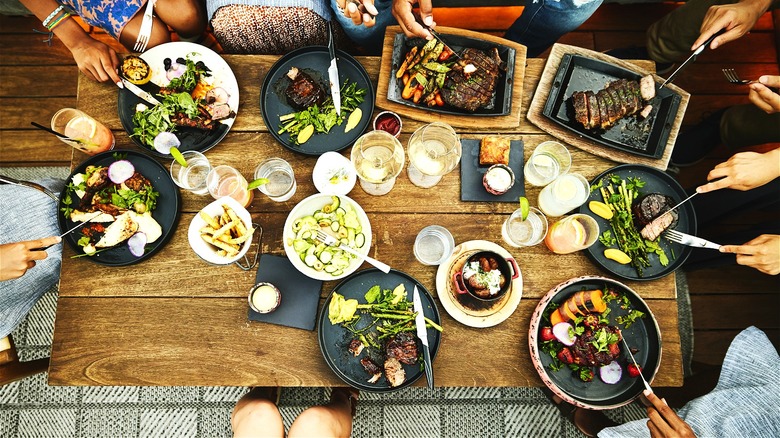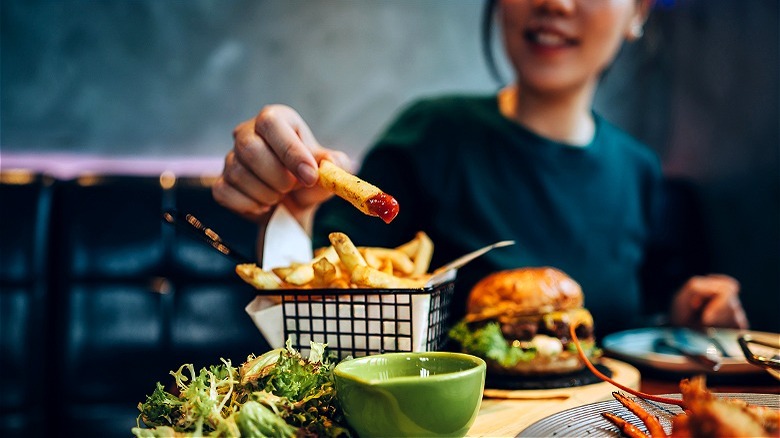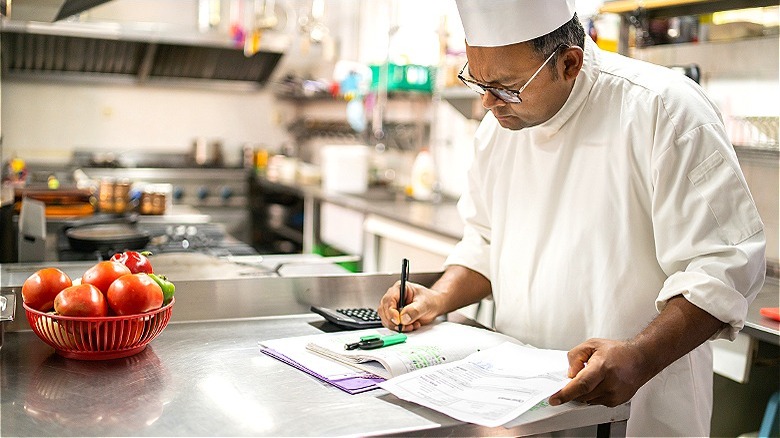Unexpected Ways Restaurants Save Money At The Customer's Expense
From increasing tip trends to added service fees to general inflation, eating out at a restaurant has become increasingly expensive. Not only does this pricing trajectory mean restaurants have become too expensive for many Americans to enjoy, but increased costs have even forced restaurants of all sizes to close. Restaurants are easily one of the top small businesses to fail, but lately, even larger restaurants are struggling. Major chains like Red Lobster, TGI Fridays, Outback Steakhouse, and Applebee's have had to close locations due to ongoing financial difficulties.
The surge in restaurant costs today are largely due to a combination of supply chain issues and inflation, in addition to the fact many restaurants have still yet to fully recover from the COVID-19 pandemic. These factors have increasingly pushed restaurants to charge more and also rely on some sneakier tricks to save money, usually at the customer's expense. A particularly controversial new strategy is the addition of surcharges to bills. These charges can range from 3% to 5% and are typically tacked on to your total bill at the end.
Per the National Restaurant Association's restaurant business conditions survey, roughly 15% of restaurants added surcharges in 2022. While most consumers are opposed to these types of charges, they are at least presented to diners in a more open fashion compared to other, decidedly more sneaky, restaurant strategies that might surprise you.
Deceptive restaurant strategies
While tipping is definitely one of the major ways that restaurants offset labor costs onto customers (the U.S. has a dark history when it comes to tipping practices), there are several other, less obvious ways that restaurants are also passing costs on to you. Many of these strategies involve a restaurant both saving money and also simultaneously making more money off of the same item. For instance, a big money-making category for restaurants is beer, wine, and liquor. From excessive mark-ups on bottles of wine (the industry standard is usually between 200% to 300%, per Sommelier Business) to making intentionally weaker cocktails that use more of cheaper ingredients, like mixers and juices, than actual alcohol, a restaurant's bar is often its most profitable element.
Some restaurants are even deceptive about the type of fish and/or steak they serve. A 2017 study from the University of California at Los Angeles and Loyola Marymount University found that 47% of sushi was mislabeled across numerous sushi restaurants in LA. Similarly, around the same time, most restaurants in the U.S. claiming to serve Kobe beef were, in fact, lying, according to Larry Olmsted in Bon Appétit.
What's more, some restaurants even use pre-made foods to offset costs. While you might expect things like condiments and salad dressings to be premade, some restaurants rely on entirely premade dishes ranging from chicken to quiche to burritos. Plus, according to a report from the American Frozen Food Institute, over 40% of food service operators reported purchasing more frozen food than they did pre-pandemic.
Restaurant expenses
It's important to realize that not all cost-saving restaurant strategies rely on actively deceiving the customer. Many restaurants will attempt to use every part of an animal in order to get more bang for their ingredient buck. Similarly, many restaurant dishes might use some of the same ingredients to ensure nothing goes to waste. Such zero-waste movements across the restaurant industry encourage restaurants to repurpose their leftover ingredients to help offset unnecessary waste while allowing the restaurant to earn more money from those same ingredients.
Another common strategy of restaurants is simply to blatantly overcharge for add-on ingredients (guacamole, anyone?) in the hopes of making additional money on a dish that might already be at the cap of what customers are willing to pay for it. (See our guide on ways to save money when dining out.) This said, taking out the fact that many of the strategies restaurants use today are downright deceptive to customers, it's not hard to see why some restaurants might feel the need to resort to such tactics. The National Restaurant Association's state of the restaurant industry survey for 2024, for example, found that 38% of restaurant owners report not being profitable in 2023.
Further, much like consumers, who have been struggling with the 25.1% increase in grocery costs since 2020, restaurants are also feeling the increased financial strain of purchasing food ingredients. In its survey, the National Restaurant Association reports that 97% of restaurant owners cited higher food costs as an issue for their restaurants. Plus, most restaurants operate on relatively thin profit margins which can make their ability to absorb additional costs especially difficult. According to CNBC, a restaurant's typical pretax profit is ~5% of sales.


